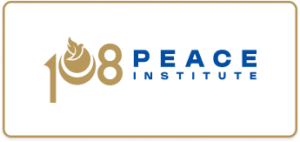Capturing Tibet
Colonialism and the Camera during the Mission to Lhasa, Tibet
In December 1903, more than 1,000 British and Sikh soldiers and nearly 7,000 Indian labourers left the hill stations of Darjeeling, Gangtok and Kalimpong. Their aim was to reach Tibet.

The blurred piece of metal captured in this view of the entrance to Lhasa is likely the barrel of a British gun.
The Mission to Tibet led by Colonel Francis Younghusband was in truth a military invasion. As the Mission moved slowly from Dromo to Lhasa British officers hunted wild animals,looted monasteries and estates, and they killed many Tibetan soldiers who tried to stop their progress. Several men also captured images of Tibet with their cameras.

This exhibition features photographs – from the collection of National Museums Liverpool – taken by British officers in Tibet during 1903 and 1904. These photographs help us to understand the Mission to Tibet in a number of different ways. We can:
- Trace the route of the Mission from the Teesta River in Sikkim to Lhasa.
- See how the British portrayed Tibet to the outside world.
- View these images as British propaganda and intelligence gathering.
- Identify Tibetan, Chinese and Himalayan officials photographed by the British.
- Understand how Tibetans reacted to the arrival of the British.
- Think about these photographs as a record of people and places.
The exhibition uses two albums of photographs taken during the Mission to Tibet. The first album features photographs by the Mission’s official photographer, John Claude White. The second is an album of photographs some taken by army medic, Gerald Irvine Davys. We have recreated both albums as flipbooks for the exhibition.

This exhibition has been produced by the 108 Peace Institute in collaboration with National Museums Liverpool. We would like to thank the curator of this exhibition Dr. Emma Martin, Manchester University, and Meghan Backhouse, National Museums Liverpool, for their support and contributions.
All photographs courtesy of National Museums Liverpool, World Museum.


In December 1903, more than 1,000 British and Sikh soldiers and nearly 7,000 Indian labourers left the hill stations of Darjeeling, Gangtok and Kalimpong. Their aim was to reach Tibet.

The blurred piece of metal captured in this view of the entrance to Lhasa is likely the barrel of a British gun.
The Mission to Tibet led by Colonel Francis Younghusband was in truth a military invasion. As the Mission moved slowly from Dromo to Lhasa British officers hunted wild animals, looted monasteries and estates, and they killed many Tibetan soldiers who tried to stop their progress. Several men also captured images of Tibet with their cameras.

This exhibition features photographs – from the collection of National Museums Liverpool – taken by British officers in Tibet during 1903 and 1904. These photographs help us to understand the Mission to Tibet in a number of different ways. We can:
- Trace the route of the Mission from the Teesta River in Sikkim to Lhasa.
- See how the British portrayed Tibet to the outside world.
- View these images as British propaganda and intelligence gathering.
- Identify Tibetan, Chinese and Himalayan officials photographed by the British.
- Understand how Tibetans reacted to the arrival of the British.
- Think about these photographs as a record of people and places.

This exhibition has been produced by the 108 Peace Institute in collaboration with National Museums Liverpool. We would like to thank the curator of this exhibition Dr. Emma Martin, Manchester University, and Meghan Backhouse, National Museums Liverpool, for their support and contributions.
All photographs courtesy of National Museums Liverpool, World Museum.

